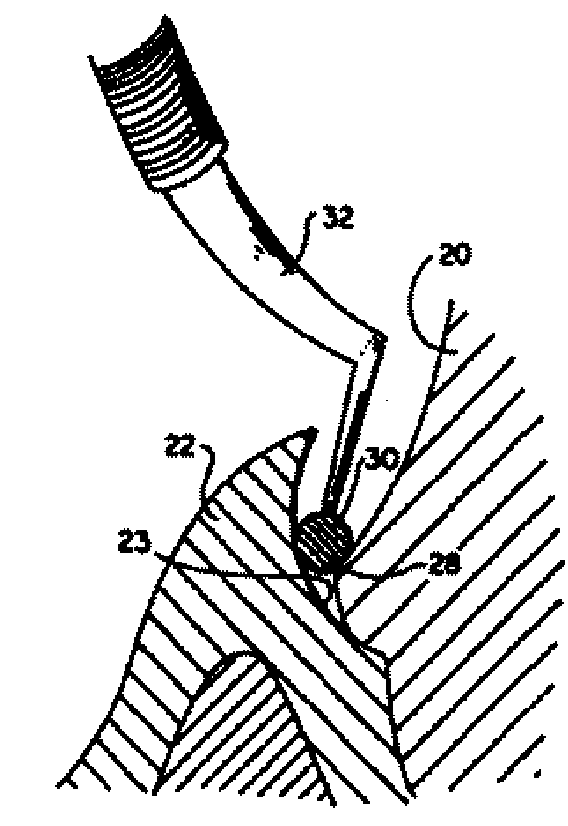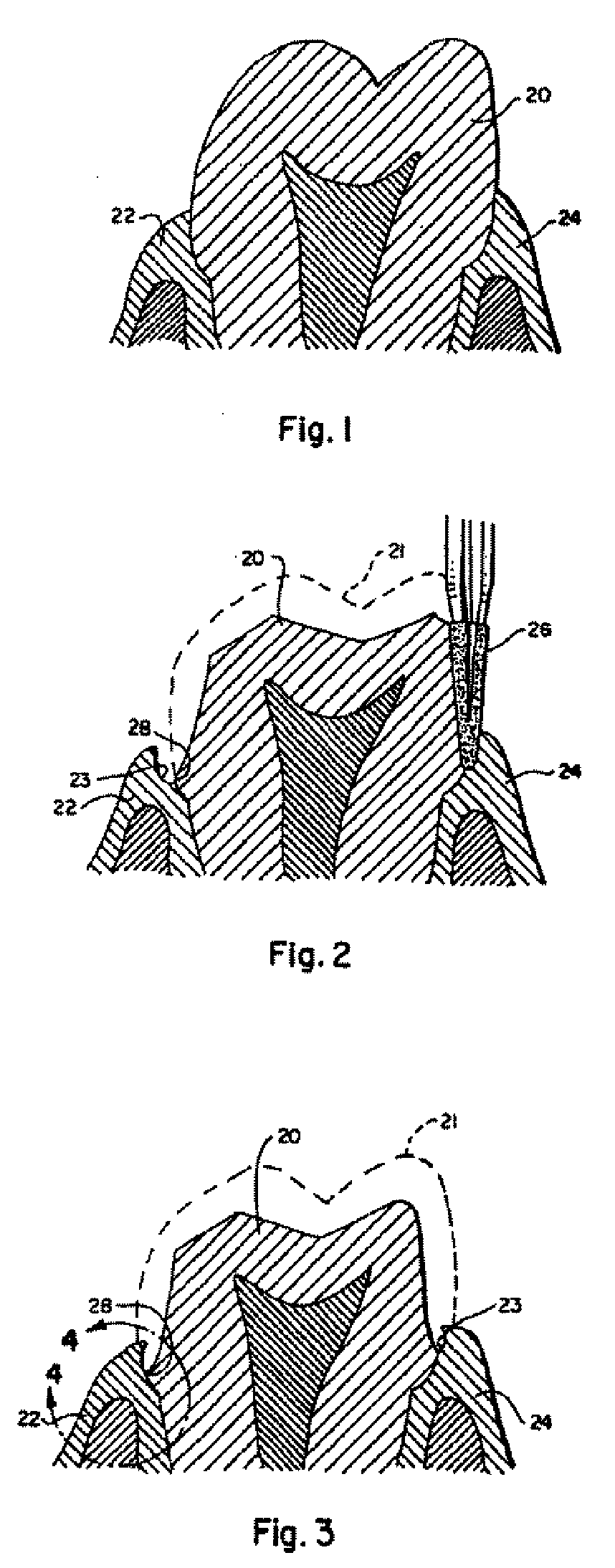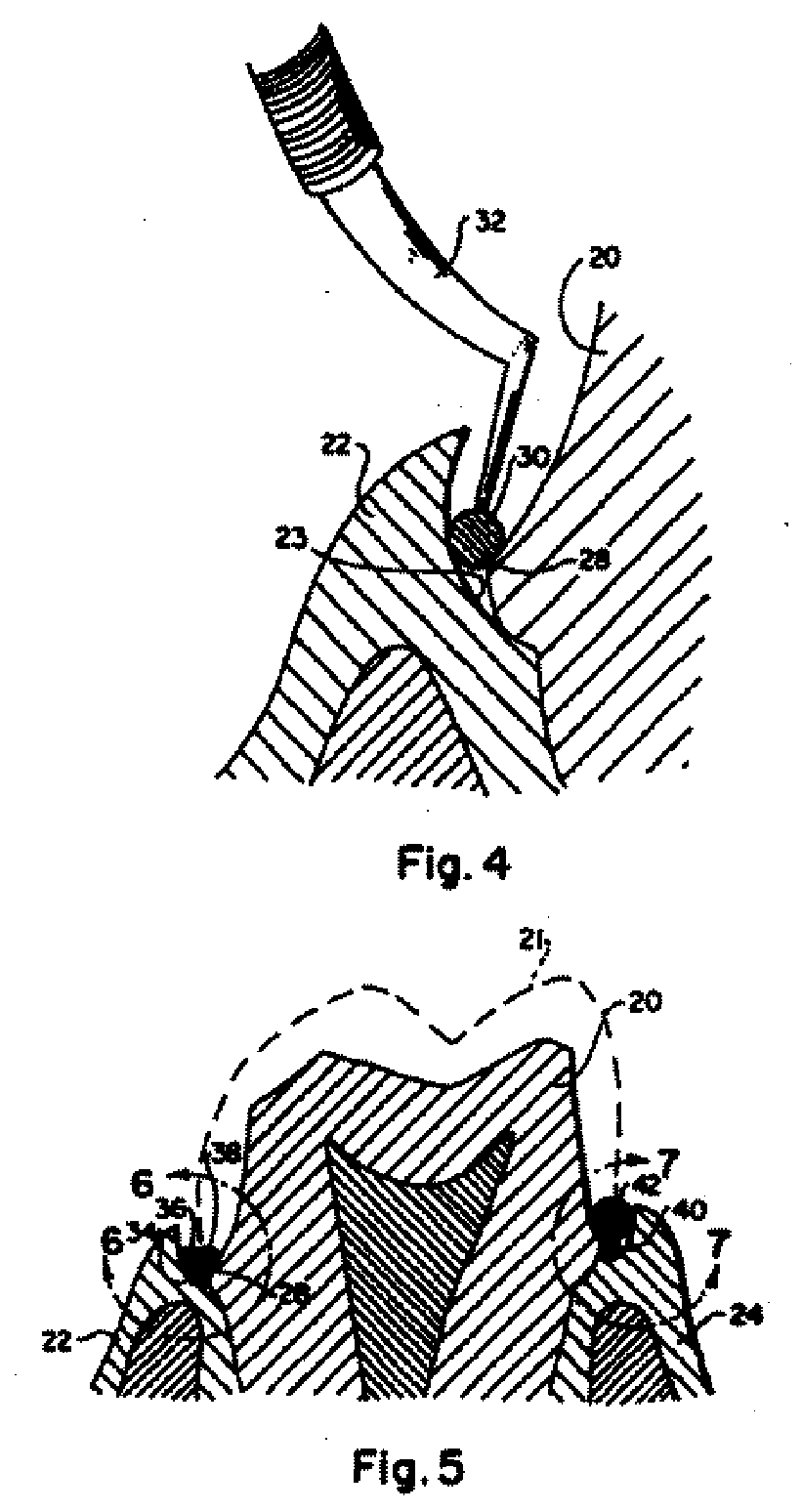Gingival retraction cord with wetting agent
a technology of wetting agent and gingival tissue, applied in the field of gingival tissue management, can solve the problems of affecting the quality of dental impressions, the detachment of artificial crowns from teeth, and the failure of artificial crowns in time,
- Summary
- Abstract
- Description
- Claims
- Application Information
AI Technical Summary
Benefits of technology
Problems solved by technology
Method used
Image
Examples
Embodiment Construction
[0023] The present invention is directed to a retraction cord for retracting gingival tissue pre-impregnated with a retracting agent and / or hemostatic agent, and a wetting agent. However, in order to understand the present invention it is helpful to first review the process involved in fitting an artificial crown.
[0024]FIG. 1 illustrates a normal tooth 20 requiring restoration by use of an artificial crown. Tooth 20 is surrounded by gingival tissue 22 and 24 (gingival tissue is commonly referred to as the “gums”).
[0025] The dental practitioner first prepares the tooth to receive an artificial crown by removing portions of the tooth (shown by the broken line outline at 21) with a high-speed drill 26, as indicated in FIG. 2. The junction at which the uncut lower portion and the cut upper portion of the tooth meet is referred to as the “margin”28.
[0026] Gingival supporting tissue 22, 24 is comprised largely of collagen fibers. Because these collagen fibers are highly elastic, the gi...
PUM
 Login to View More
Login to View More Abstract
Description
Claims
Application Information
 Login to View More
Login to View More - R&D
- Intellectual Property
- Life Sciences
- Materials
- Tech Scout
- Unparalleled Data Quality
- Higher Quality Content
- 60% Fewer Hallucinations
Browse by: Latest US Patents, China's latest patents, Technical Efficacy Thesaurus, Application Domain, Technology Topic, Popular Technical Reports.
© 2025 PatSnap. All rights reserved.Legal|Privacy policy|Modern Slavery Act Transparency Statement|Sitemap|About US| Contact US: help@patsnap.com



